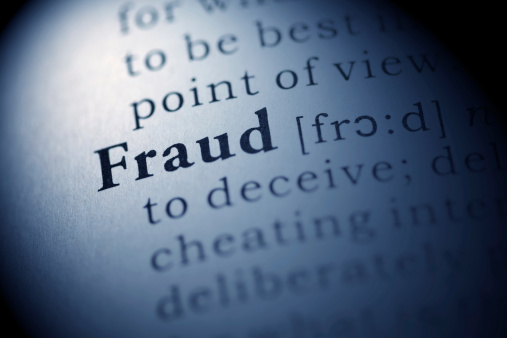Originally published in The Docket, May 2016
By Mark A. Van Donselaar
 You’ve gone through all the work of litigating the case through pleadings, motions, discovery and, finally, either a dispositive motion or trial resulting in your client being awarded a long-sought monetary judgement. Feeling good about yourself and proud of your victory, you press onward into post-judgment collection. And then it hits you. It’s not uncommon. In fact, at times it’s almost expected, yet it’s demoralizing, nonetheless. All the time and effort that you’ve put into the case leads up to the situation that nearly every civil litigator has encountered: the dreaded uncollectible judgment debtor.
You’ve gone through all the work of litigating the case through pleadings, motions, discovery and, finally, either a dispositive motion or trial resulting in your client being awarded a long-sought monetary judgement. Feeling good about yourself and proud of your victory, you press onward into post-judgment collection. And then it hits you. It’s not uncommon. In fact, at times it’s almost expected, yet it’s demoralizing, nonetheless. All the time and effort that you’ve put into the case leads up to the situation that nearly every civil litigator has encountered: the dreaded uncollectible judgment debtor.
However, all is not lost when the judgment debtor explains that it does not have any income or assets. The opinion in A.G .Cullen Construction, Inc. v. Burnham Partners, LLC,1 (hereinafter “Cullen”) highlights three possible actions to take after a judgment debtor appears to be uncollectible: an action for violation of the Uniform Fraudulent Transfer Act, an action to pierce the corporate veil, and an action against the corporate officers, directors, members or manager for breach of fiduciary duty. Additionally and importantly, Cullen represents the first reported decision of an Illinois court piercing the corporate veil of a limited liability company, albeit while applying Delaware law.
The dispute in Cullen arose from the construction of a warehouse in Pennsylvania. Defendant, Westgate Ventures, LLC, hired A.G. Cullen Construction as its building contractor for the warehouse. Westgate was primarily owned by Defendant, Burnham Partners, LLC which, in turn, was owned by Defendant, Robert Halpin. Halpin signed the contract with Cullen on behalf of Westgate. Near the completion of construction, a disagreement arose between Cullen and Westgate, and Westgate refused to approve a payment of $360,000 to Cullen. The matter went to arbitration in July 2007, and in September 2007, Cullen obtained an arbitration award of$457,416.37 against Westgate which was then reduced to a judgment in Pennsylvania in November 2007.
In April 2007, prior to the arbitration hearing, Westgate sold the warehouse for $3.2 million. Westgate conducted no further business after the warehouse was sold, and Halpin undertook to liquidate its assets. First, Halpin paid the lender which had a secured interest in the warehouse over $2.5 million. Second, Halpin paid $120,000 to Northern Trust to repay a personal loan that he and his wife had made to Westgate. Third, Halpin paid a development fee of $400,000 to Burnham Partners, LLC, which was later transferred to Halpin, personally. Finally, Halpin gave $70,000 to himself and his wife. Those four transactions left Westgate with the Docket, May 2016 a balance of $27,530.44 which Halpin then transferred to himself in the same month that the arbitration with Cullen occurred.
Cullen then filed an action in the circuit court of Cook County to recover the amount owed on the Pennsylvania judgment. Cullen brought claims for fraudulent conveyance and breach of fiduciary duty, and also sought to pierce Westgate’s corporate veil to hold Burnham and the Halpins liable for the debt of Westgate. While the case was pending, Westgate filed for bankruptcy protection and thus the case only went to trial against Mr. and Mrs. Halpin and Burnham Partners, LLC. At the close of trial, the circuit court ruled against Cullen finding that Burnham and Westgate were separate entities that kept separate books and records. The circuit court also ruled that Burnham earned its $400,000 development fee and that the $175,000 that was repaid by Westgate to the Halpins was also appropriate.
The appellate court began its review by examining the claim alleging a fraudulent conveyance. The court noted that the Uniform Fraudulent Transfer Act2 is intended to allow a creditor to defeat a debtor’s transfer of assets to which the creditor is entitled.3 Claims under the UFTA are divided into two categories – fraud in fact and fraud in law.4 Claims brought under section 5(a)(1) of the UFTA are for actual fraud, referred to as “fraud in fact.”5 Such claims require a showing of an actual intent to hinder, delay or defraud creditors.6 The court noted that: [c]onstructive fraud or “fraud in law” does not require proof of actual intent to defraud. (citations omitted) “Rather, transfers made for less than reasonably equivalent value, leaving a debtor unable to meet its obligations, are deemed or presumed to be fraudulent.” (citation omitted) The test for determining the validity of a transfer under the UFTA is “whether or not it directly tended to or did impair the rights of creditors***. If the transfer hinders, delays, or defrauds his creditors, it may be set aside as fraudulent.” (citations omitted)7
The appellate court then reviewed the 11 factors specifically listed in section 5(b) of the UFTA that are to be considered in making a determination as to actual intent under section 5(a). Those factors are:
- The transfer or obligation was to an insider;
- The debtor retained possession or control of the property transferred after the transfer;
- The transfer or obligation was disclosed or concealed;
- Before the transfer was made or obligation was incurred, the debtor has been sued or threatened with suit;
- The transfer was of substantially all the debtor’s assets;
- The debtor absconded;
- The debtor removed or concealed assets;
- The value of the consideration received by the debtor was reasonably equivalent to the value of the asset transferred or the amount of the obligation incurred;
- The debtor was insolvent or became insolvent shortly after the transfer was made or the obligation was incurred;
- The transfer occurred shortly before or shortly after a substantial debt was incurred; and
- The debtor transferred the essential assets of the business to a lienor who transferred the assets to an insider of the debtor.8
The appellate court commented that while proof of some or even all of the factors does not create a presumption that the debtor had the actual intent to defraud, “…the presence of these ‘badges of fraud’ may, in sufficient number, give rise to an inference or presumption of fraud.”9
However, the circuit court had not even considered the factors found in section 5(b) in making its decisions, but had simply ruled that Burnham and Westgate were separate entities.10 On review, the appellate court found that the evidence at trial had established a significant number of “badges” giving rise to the presumption of fraud.11 Specifically, the court found that Burnham and Robert and Lori Halpin were insiders of Westgate. Thus, the $400,000 payment of the development fee to Burnham was to an insider as were the payments to Robert and Lori Halpin.12 It also disagreed with the trial court’s acceptance of Halpin’s testimony that he had no reason to believe that Cullen would obtain the arbitration award that it did and the trial court’s finding that Halpin had acted in good faith. The appellate court found that Halpin knew of the threat of a lawsuit and judgment at the time he was winding up Westgate and that he had an obligation to not dissipate its assets as he did, especially without making any disclosures to Cullen. Furthermore, the appellate court found that Westgate did not receive “reasonably equivalent value” in exchange for the $400,000 development fee paid to Burnham or for the $120,000 transfer to Northern Trust to repay Halpin’s loan. With respect to the development fee, the appellate court found that Burnham and Halpin were already obligated to perform the services for which they were compensated as the majority owner of Westgate. The court also noted that Halpin failed to present any invoice or other evidence showing what services Burnham actually performed that were above and beyond what it was already required to do that warranted the $400,000 fee.
As to the alleged loan repayments, the court quoted Northwestern Memorial Hospital v. Sharif13 stating that, just as in Sharif, Halpin “failed to present objective, unbiased testimony or documentary evidence, e.g. cancelled checks, bank transfers, loan agreements, to support his contention that these transfers to himself were credible loan repayments to a bona fide creditor.” It also noted that in transferring money to the Northern Trust to repay the Halpins loans, Westgate did not receive reasonably equivalent value for the payment; in reality, Westgate was actually repaying a capital contribution that Burnham had been required under the LLC agreement to make, but which the Halpins had instead loaned to Westgate. It also held that Westgate’s transfers of all of its assets to Burnham and then to the Halpins just before Cullen obtained a judgment against Westgate impaired Cullen’s rights and were in violation of the UFTA.
Turning to the issue of whether Westgate’s corporate veil should be pierced, the court noted that under Illinois law, the law of the state of incorporation governs that issue.14 Westgate was a Delaware corporation. The court noted that Delaware courts do not lightly disregard the corporate form, but that the veil may be pierced when there is fraud or when a subsidiary is an alter ego of a parent.15 The court went on to find that the fraud on the part of Westgate as to the transfers made to Burnham and Halpin raised a “strong presumption for piercing the corporate veil.”16 Therefore, the appellate court reversed the trial court’s decision denying the plaintiff’s request to pierce Westgate’s corporate veil.
Finally, the court addressed the claim for breach of fiduciary duty against Halpin. The trial court had found no breach. The appellate court held that once Westgate became insolvent, Halpin “owed a fiduciary duty to Cullen, as a creditor of Westgate, to manage its assets properly and in the best interest of creditors.”17 The court further held that when a corporation becomes insolvent, as Westgate had, its assets are deemed to be held in trust for the benefit of its creditors.18 Halpin breached that duty by making transfers to himself, his wife and Burnham that left Westgate without assets to pay the amount owed to Cullen.19
The takeaway from Cullen is, on one hand, very simple and on the other, not simple at all. The simple point is that all is not necessarily lost when your client is faced with a debtor who appears to have no assets and is therefore judgment-proof. The more difficult part is that it takes a lot of work to learn and obtain the facts and information necessary to put together a claim such as the ones brought in the Cullen case. Obviously, cases brought for breach of fiduciary duty, to pierce a corporate veil or for violation of the UFTA will vary greatly based on the facts of the situation. The good news is that such actions are viable in the right circumstances for attorneys and clients who have the tenacity and ability to uncover the relevant facts and are able to allege valid theories of recovery based upon them.




